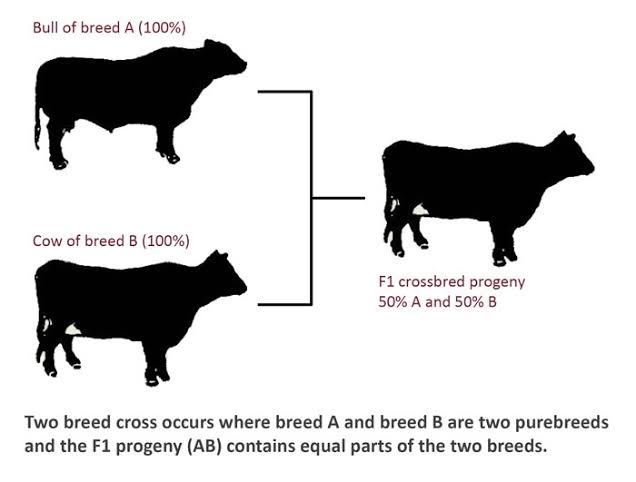Agriculture Notes On – Crossbreeding – For W.B.C.S. Examination.
Agriculture as an optional subject is useful from numerous points of view. A decent hold over the subject helps you massively in taking care of the geography, economics, social issues in General Studies as the learning comes conveniently. Indeed, even essay paper, there is absolutely no less than one subject from Agriculture. Any W.B.C.S. aspirants who have scholarly foundation in Agriculture, Life Sciences, Botany, and other related fields can choose this subject as their optional. Paper I of agriculture is generic in nature where Paper- II is technical. Candidates with no prior knowledge of agriculture or Biology should not opt this subject as their optional for W.B.C.S. Mains Exam.Crossbreeding involves the mating of animals from two breeds. Normally, breeds are chosen that have complementary traits that will enhance the offsprings’ economic value.Continue Reading Agriculture Notes On – Crossbreeding – For W.B.C.S. Examination.
An example is the crossbreeding of Yorkshire and Duroc breeds of pigs. Yorkshires have acceptable rates of gain in muscle mass and produce large litters, and Durocs are very muscular and have other acceptable traits, so these breeds are complementary. Another example is Angus and Charolais beef cattle. Angus produce high-quality beef and Charolais are especially large, so crossbreeding produces an animal with acceptable quality and size.
The other consideration in crossbreeding is heterosis, or hybrid vigour, which is displayed when the offspring performance exceeds the average performance of the parent breeds. This is a common phenomenon in which increased size, growth rate, and fertility are displayed by crossbred offspring, especially when the breeds are more genetically dissimilar. Such increases generally do not increase in successive generations of crossbred stock, so purebred lines must be retained for crossbreeding and for continual improvement in the parent breeds. In general, there is more heterosis for traits with low heritability. In particular, heterosis is thought to be associated with the collective action of many genes having small effects individually but large effects cumulatively. Because of hybrid vigour, a high proportion of commercial pork and beef come from crossbred animals.To view Agricultire Syllabus , CLICK HERE.
Cross breeding is the process of breeding with the intention to create offspring that share the traits of both parent lineages or to produce an animal with hybrid vigour (the improved or increased function of any biological quality in a hybrid offspring).In the developing world, cross breeding mainly seeks to improve the milk production of dairy cattle. Unlike milk production in developed countries where certain breeds of cows produce around 30 litres a day,cows in some developing countries can only produce 1-2 litres per day. Although productive capacity varies depending on the quality of feeding, nutrition and animal husbandry, much has to do with genetics.
Please subscribe here to get all future updates on this post/page/category/website


 +919674493673
+919674493673  mailus@wbcsmadeeasy.in
mailus@wbcsmadeeasy.in







































































































